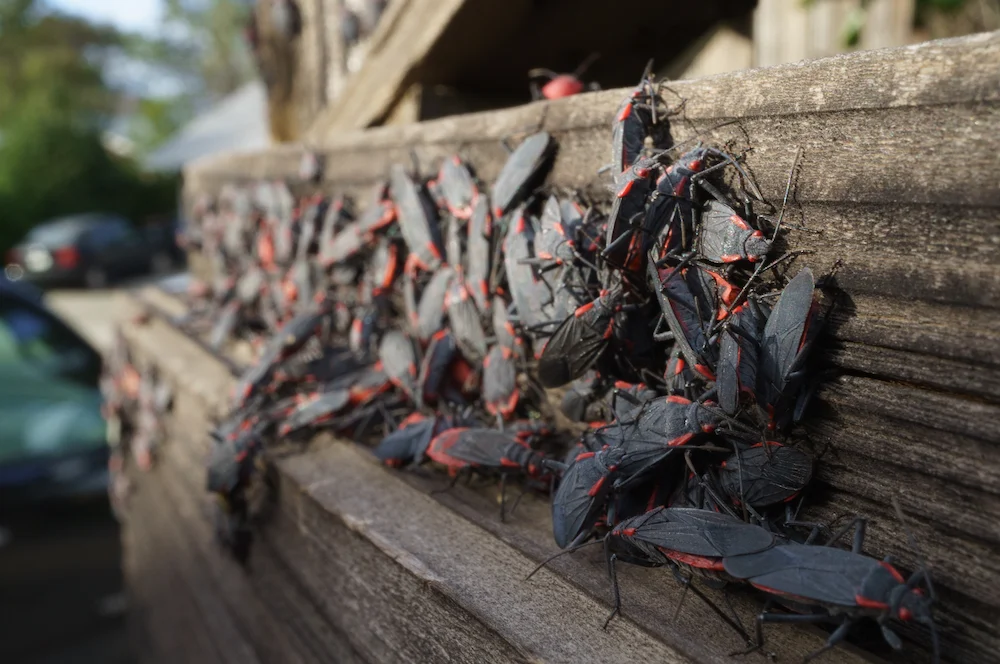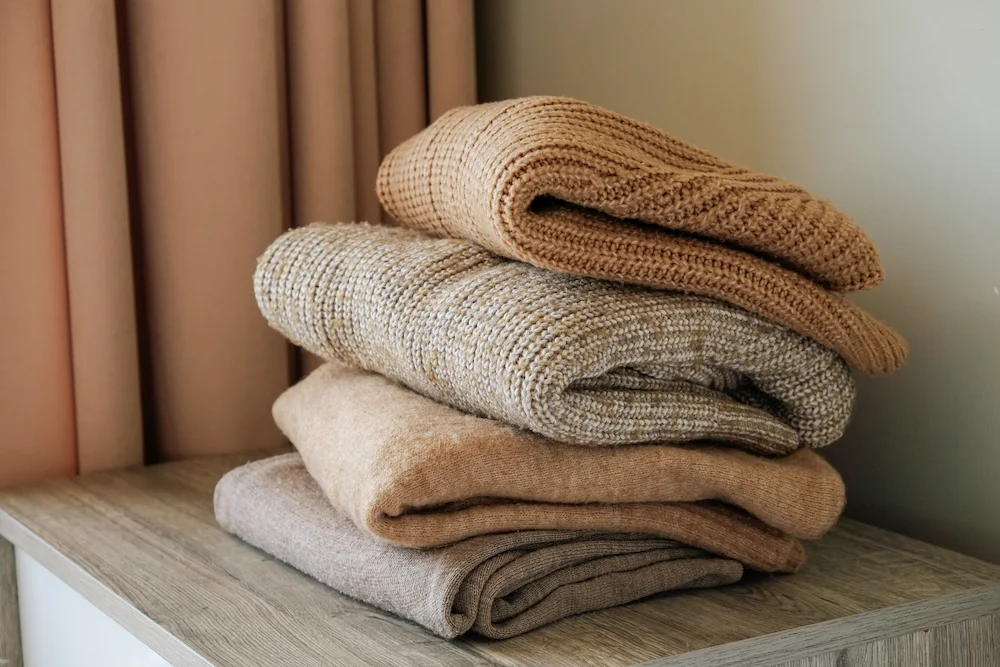Summary: As the temperature drops, boxelder bugs are more desperate to invade houses before winter. This blog dives into the predictable lifestyles and interesting habits of boxelder bugs. Pointe Pest Control provides year-round protection from pests.
Boxelder bugs are a truly seasonal pest. We don’t usually give them a second thought for 10 months out of the year, but when fall sets in? They become top-of-mind nuisances that we want to leave us alone, similar to stink bugs (they share a lot of similarities).
If these bugs love the trees they’re named after so much, why do they congregate on our houses like it’s their own city hall? The short answer is that boxelder bugs don’t do well in the cold. The longer answer takes a bit of explaining, so let’s dive into the busy lives of these sunbathing bugs!
Why Are They Active in the Fall?
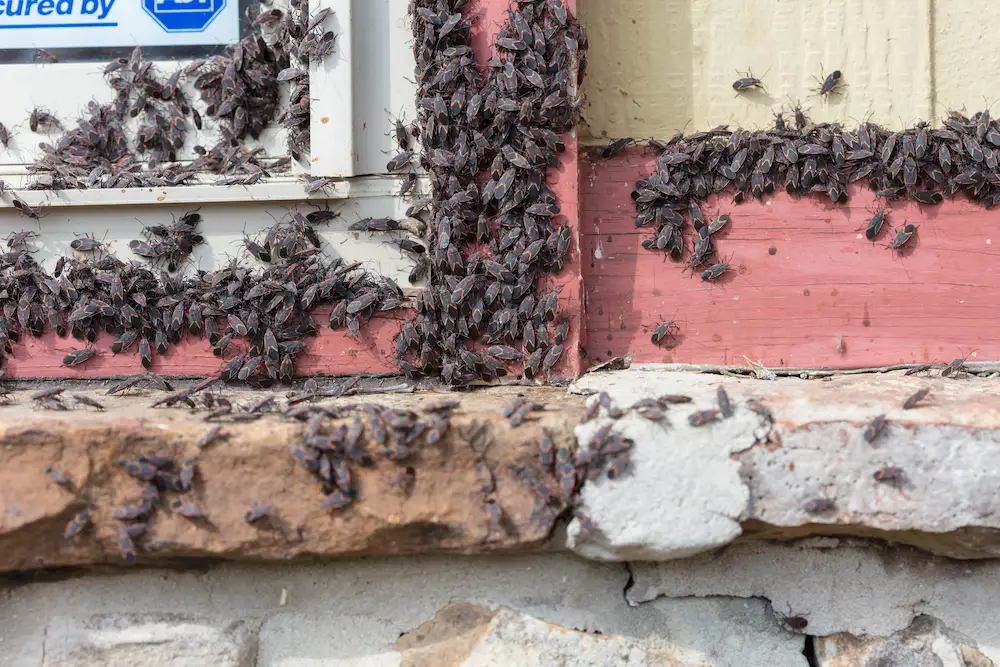
The top priority of boxelder bugs is surviving the winter. To do this, they need a warm and safe shelter. The search for this shelter begins in the early fall. When the bugs feel the temperature dropping over multiple days, they stop what they’re doing (usually eating) and start seeking a shelter that will hold their huge numbers.
This desperation for shelter makes boxelder bugs braver than usual, which is why you might see a horde of bugs clustered on the side of your house. They try to stay in direct sunlight because it gives them energy to continue their quest of getting inside the house or building. This is also why they tend to gather near doors, windows, and crevices.
Boxelder bugs are objectively annoying this time of year, but they’re not dangerous. Plus, it’s only the adults who overwinter, so we don’t have to worry about them laying eggs indoors if they happen to invade. But this surge in autumn activity makes it clear that pest control is essential (more on this later) before the bugs have a chance to claim our homes as their own.
What Do They Do in the Summer?
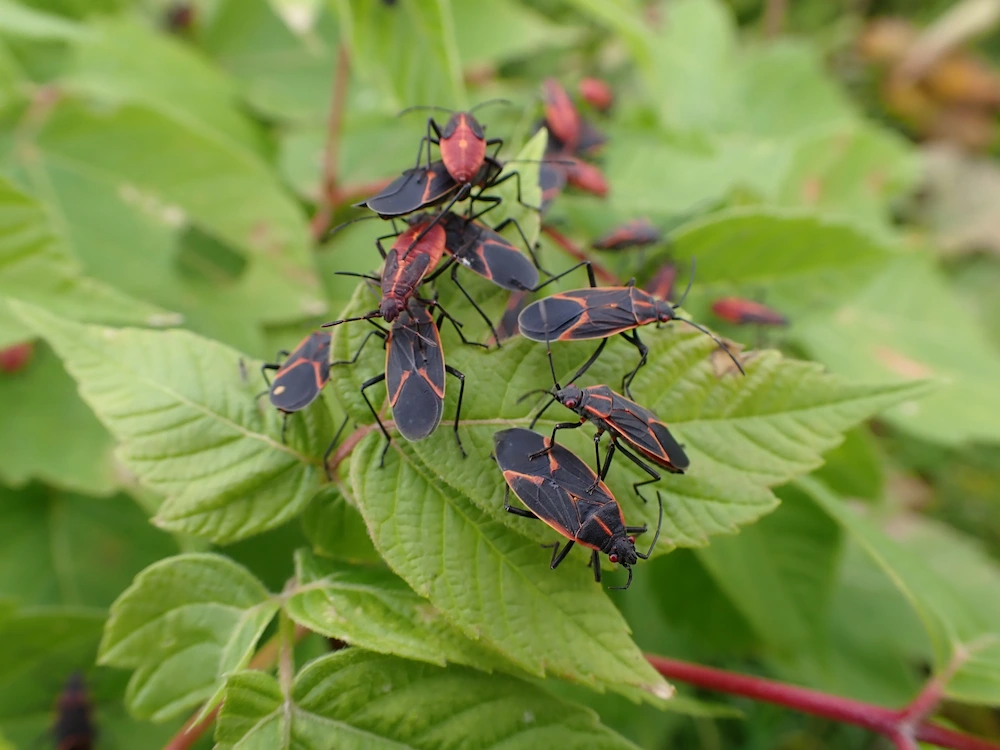
After hearing about their fall activities, this question might be on your mind. Basically, boxelder bugs feed from spring through summer to fatten up for the cooler months. Most bugs live for a few weeks, but these pests can live up to a year in the right conditions!
We don’t often see boxelder bugs in the warmer months unless we actually look for them. They’re black with red-orange coloring around their flat bodies. They’re only half an inch long, so you’ll have to get close to their favorite habitats to actually spot them.
Speaking of which, boxelder bugs typically stay on female trees that produce seeds. Ash, maple, and boxelder (obviously) trees are their favorites. The bugs feed on the seeds and new leaves of these trees. If they happen to be near apple or plum trees, boxelder bugs are known to enjoy these fruits as well.
After mating earlier in the warmer months, these bugs lay eggs on the same trees they inhabit so their offspring has an immediate food source. The boxelder bug populations are worse in dry summers because the conditions motivate them to feed and reproduce. If it’s been a dry summer, you can bet you’ll see a lot of these bugs that fall.
Where Do They Gather?

Besides their preferred trees, boxelder bugs gather on objects that generate warmth and get lots of sunlight. As we mentioned earlier, the sunlight gives them energy because boxelder bugs (and other insects) are cold-blooded. Their energy levels are completely dependent on their environment.
Since they’re not strong fliers, these bugs often stay on the warm trees and rocks within their proximity. Their flat bodies can slip into tight spaces when they need to disappear, which is how they slip through cracks and under siding.
If boxelder bugs happen to get inside a house or building, they will enter diapause (aka hibernation) when it’s too cold for their liking. Once it’s spring — or a stretch of warm days in winter — boxelder bugs wake up and start moving again.
Should I Be Concerned?
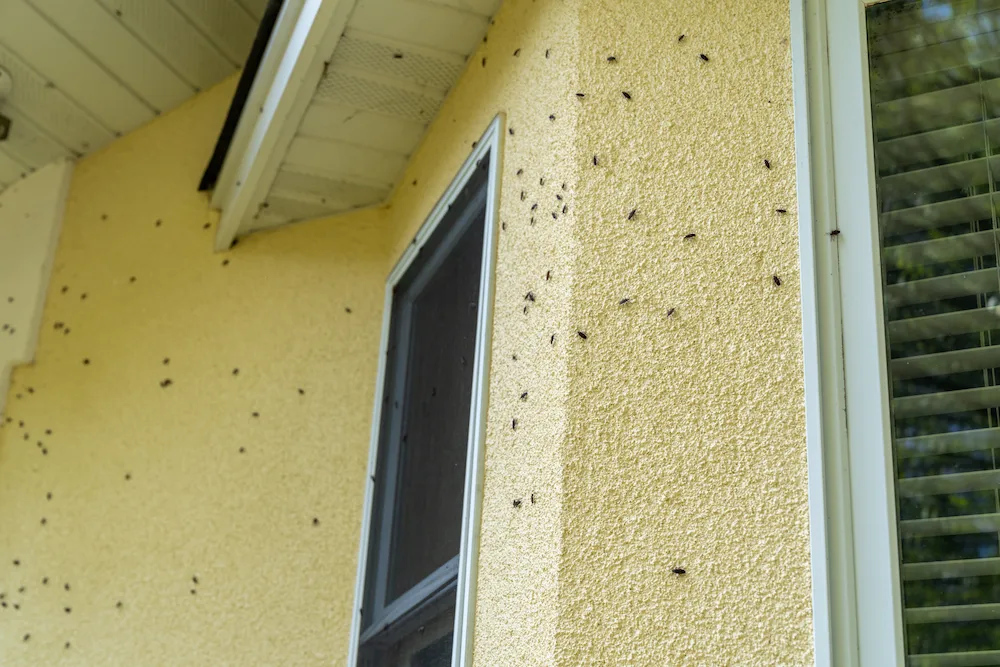
The idea of hundreds of bugs inside the house isn’t pleasant for anyone, no matter how harmless the pests are. As we said earlier, boxelder bugs and brown marmorated stink bugs are very similar. They don’t do much, besides wanting to invade our homes in autumn and spraying a smelly liquid when they’re handled.
That’s right: boxelder bugs have the same defense mechanism as stink bugs. This is honestly the most concerning part of their presence since the liquid stinks and stains surfaces. Otherwise, boxelder bugs don’t destroy houses, spread diseases, or harm us.
Boxelder bugs do have piercing mouthparts that they use for drinking the contents of seeds, leaves, and fruits. But these still aren’t sharp enough to pierce our skin even if they get feisty enough to try and bite someone touching them.
If your house seems to attract more boxelder bugs than your neighbors’ houses, it’s not because of anything you did. Your house likely gets a lot of sun that the bugs crave, which draws them to your home. Boxelder bugs can only survive the winter if they have an insulated shelter, so our cozy homes are their last hope.
They aren’t the worst pests around, but prevention is still necessary with these seasonal invaders.
How Do I Prevent Boxelder Bugs?
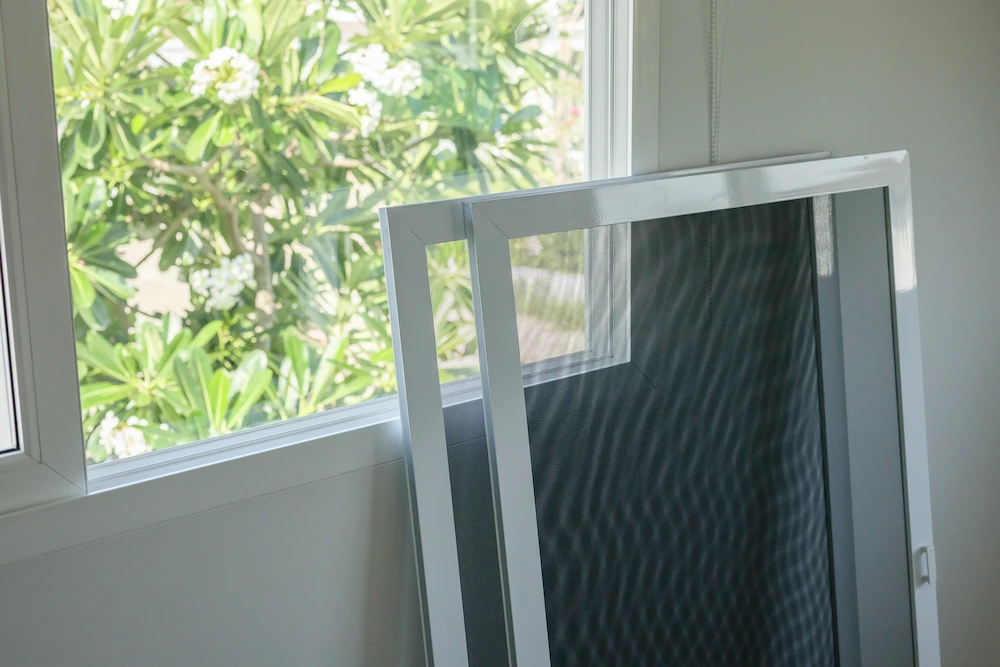
The first step to keeping any pest out of your house is to seal all possible entry points. Of course, there are plenty of other tasks that are necessary for maintaining a pest-free home. We just recommend keeping the entry point issue in mind as you go about your journey to control boxelder bugs.
Our recommended steps for preventing and eliminating boxelder bugs are:
- Seal cracks and crevices: No gap is too small for these flat bugs. Use caulk to seal all cracks and crevices on your house’s exterior.
- Replace screens and weatherstripping: Inspect your house’s window/door screens and weatherstripping. If any are loose or worn out, replace it with tight-fitting material.
- Install door sweeps: Door sweeps are essential for keeping bugs, water, and drafts out. Install door sweeps on any exterior-facing doors that don’t already have one.
- Protect your firewood: Boxelder bugs can hide in sunlit stacks of firewood. Keep your firewood pile covered, elevated off the ground, and stored at least 20 feet from the house.
- Remove them outside: If you already see these bugs gathering on your house, remove them while they’re still outside. Use a shop vacuum or a broom to disperse their numbers.
- Use your vacuum: Speaking of vacuums, they’re also the best way to remove any stray bugs that made it inside. Remove the bag or empty the canister into a trash bag and throw it in the outdoor garbage can when you’re done.
- Don’t squish them on the furniture: Whatever you do, do not squish these bugs on the furniture or walls. Their smelly liquid stains most materials (hence the vacuum).
- Get them professionally treated and removed: If there are too many boxelder bugs in your house to count, contact your local pest control for removal. Dead bugs attract dermestid beetles that feed on their dead tissue, which isn’t fun for anyone besides the beetles.
Keep Your House Bug-Free with Pointe!
It’s an unfortunate fact that a lot of critters will want to get inside your house before the chilly fall days arrive. The easiest way to fortify your home against these invaders (in addition to the preventative tasks from earlier) is with regular services from Pointe Pest Control. Our licensed technicians target the root of each pest issue with our advanced treatments.
This is a very transitional month, what with the arrival of fall and the journey further into the school year. We want to eliminate your pest concerns so you can focus on what really matters. Contact us for a free quote on our efficient pest control services today!
Citations
Boxelder bugs. (n.d.). Insight Pest Solutions. Retrieved August 21, 2025, from https://insightpestnorthwest.com/boxelder-bugs/
Boxelder bugs 101. (n.d.). Pest World. Retrieved August 21, 2025, from https://www.pestworld.org/news-hub/pest-articles/boxelder-bugs-101/
Hahn, J. & Ascerno, M. (2023). Boxelder bugs. University of Minnesota Extension. Available at https://extension.umn.edu/nuisance-insects/boxelder-bugs (Accessed on August 21, 2025).
Harney, C. (2024, November 1). Why do boxelder bugs want to invade my home?. Pointe Pest Control. Available at https://pointepestcontrol.com/why-do-boxelder-bugs-want-to-invade-my-home/ (Accessed on August 21, 2025).


